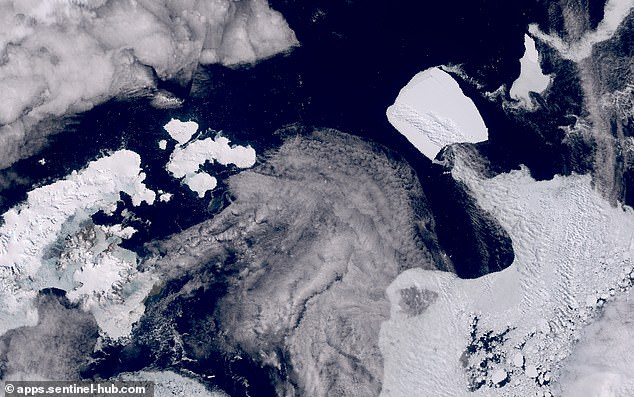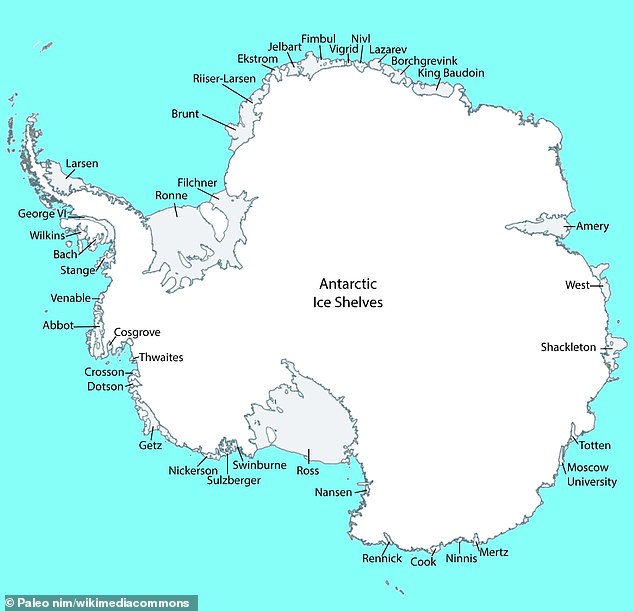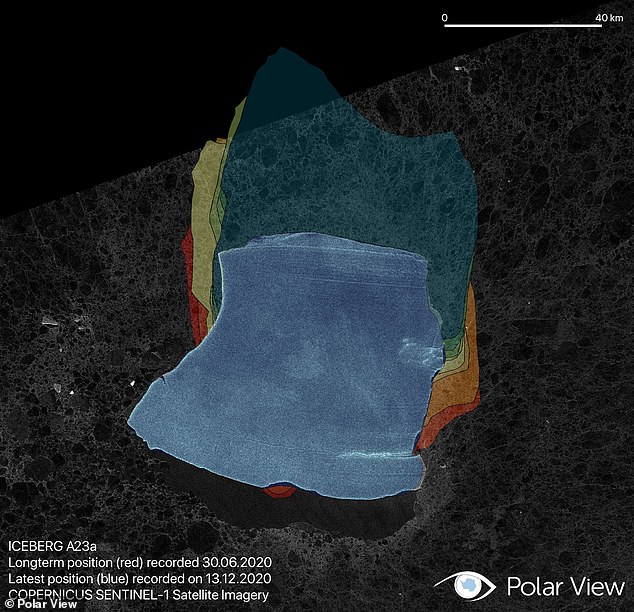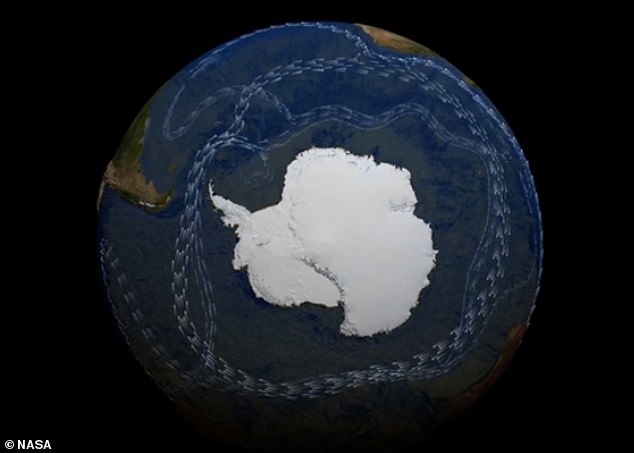The world’s biggest iceberg is on the move: Enormous ice block twice the size of Greater London is now drifting ‘at speed’ after 30 years stuck to the ocean floor, experts warn
>
After 30 years of being “stuck” in place, the world’s largest iceberg is starting to move.
The ice mass, called A23a, has an area of about 1,540 square miles — more than twice the area of Greater London (607 square miles) — and is 1,312 feet thick.
A23a – which is shaped like a ‘tooth’ – is now being transported northwards by winds and ocean currents ‘rapidly’ after 30 years of resting on the ocean floor.
It is drifting across the Antarctic Peninsula (which juts out from the mainland like a tail) and is supposed to be broken up by the rough waters once it reaches the open ocean.
Large objects such as the A23a must be constantly tracked after an outage because they can pose a threat to ships, as well as wildlife.
The ice mass, called A23a, has an area of about 1,540 square miles — more than twice the area of Greater London (607 square miles) — and is 1,312 feet thick.

A23a is now being “rapidly” transported north by winds and ocean currents after 30 years of “remaining” on the ocean floor. The jagged-shaped mountain can be seen on the right of this image taken on November 15, 2023 with the tip of the Antarctic Peninsula on the left.
Unlike many large icebergs that break off from Antarctica and float away, A23a has moved only a few hundred miles since breaking off from the Filchner Ice Shelf in August 1986.
Their lack of movement was because they were “anchored” (or stuck) to the sea floor and, as a result, less likely to fragment.
However, the huge iceberg has now broken free.
Icebergs “settle” to the ocean floor when their keel – the part below the water’s surface – is deeper than the water depth.
Dr. Andrew Fleming, a remote sensing expert from the British Antarctic Survey, said BBC It detected the first signs of movement from A23a in 2020.
“It had been mothballed since 1986, but eventually its size would have decreased enough that it would lose its grip and start moving,” he said.
“(We were) wondering if there was any potential change in shelf water temperatures that might have triggered this, but the consensus is that it’s just time.”
American planetary scientist Lindy Elkins-Tanton is part of a flight on its way to visit A23a, according to Her last post on X.

Antarctica is home to a number of ice shelves shown on this map, including the Filchner, Shackleton and Ross ice shelves. Filchner is located to the east of the Antarctic Peninsula (the part that sticks out from the Antarctic mainland like a small tail)

A23a broke off the Filchner Ice Shelf in September 1986 and fell into the southern Weddell Sea in November 1991. About three decades later it began moving north.

The previous record holder was A76, which broke off an ice shelf in the Weddell Sea in May 2021, but has since split into three pieces.
Iceberg A23a is expected to reach the Antarctic Circumpolar Current, a 13,000-mile-long ring of ocean water that flows around Antarctica.
It could be installed again near South Georgia, an island further north in the South Atlantic Ocean that is a hotspot for seals and seabirds.
If this happens, experts fear it could disrupt the creatures’ feeding routine, for example, if they are parked in an area where they normally forage for food.
But if it melts, minerals released from the ice could provide nutrients to organisms at the bottom of the ocean food chain.
“In many ways, these icebergs are life-giving; “It’s the origin point of a lot of biological activity,” said Dr. Katherine Walker of Woods Hole Oceanographic Institution in Massachusetts.
The record for the largest existing iceberg changes most years, as new icebergs break off off Antarctica and then break off into smaller pieces.
Rising water and air temperatures caused by global warming are creating instability along the coasts of Antarctica and Greenland, accelerating ice melt and increasing calving rates.

Pictured is the Antarctic Circumpolar Current – a 13,000-mile-long ring of ocean water flowing around Antarctica
The previous record holder was A76, which broke off an ice shelf in the Weddell Sea in May 2021, but has since split into three pieces.
Ice shelves are large floating platforms of ice attached to a landmass, such as Antarctica, although they are also found in other polar locations such as Greenland.
According to Guinness World Records, the largest iceberg ever measured exceeded 12,000 square miles (31,000 square kilometers) – larger than Belgium.
This colossus was sighted 150 miles west of Scott Island, in the Southern Ocean, by the USS Glacier on November 12, 1956.
(Tags for translation)dailymail
